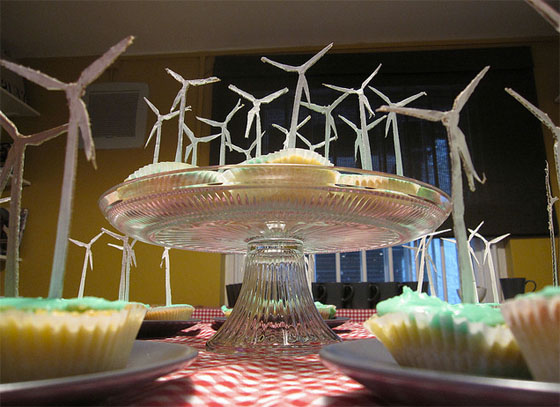 Israel fails the “Goldilocks test” for feed-in tariffs with a rate that is too low to hit the sweet spot for wind farm proliferation
Israel fails the “Goldilocks test” for feed-in tariffs with a rate that is too low to hit the sweet spot for wind farm proliferation
Israel’s Public Utility Authority posted on Monday for public comment its revised proposal for feed-in tariff rates that the government will pay for the output of small wind turbines up to 50 KW. It will pay between NIS 0.44 (US $0.10) and NIS 0.54 (US $0.12) per kilowatt hour, a mere quarter of what was floated in 2009 as a possible payment rate.
A feed-in tariff policy was originally decided upon in June, 2008, with the PUA agreeing to purchase the electricity from small domestic and commercial wind turbines.
Then in 2009 it proposed rates that would have been much higher than today’s, according to PUA documents (PDF) posted by feed-in tariff expert Paul Gipe at wind-works (PDF).
In 2009, for turbines smaller than 10 KW the PUA floated a payment rate of NIS 1.60 per kilowatt/hour (PDF) ($0.40), and for up to 50 KW turbines, NIS 1.25 ($0.30) per kilowatt/hour. The total quota was for 30 megawatts through 2016.
These rates were to have been stepped down by 2% a year, giving investors the certainty needed for calculating payback, to prevent the problems of instability such as Spain experienced with its overly generous fixed rate feed-in tariff, that then had to be sharply curtailed as it became oversubscribed.
Typically, feed in tariffs work well enough when they are set at about double the retail rate paid for electricity.
And “well enough” is actually what an ideal feed in tariff aims for, a Goldilocks-like “just right”. Too generous, and they bankrupt a country as renewable energy skyrockets through paying unnecessarily high rates. But too feeble, and no action is spurred, leaving only dirty energy in place.
The average retail cost of electricity in Israel is about NIS 0.50, about the same as the rate being offered to consumers to become small wind developers. This revised rate is probably not enough in itself to spur action by consumers, because it is not double.
However, it would offset the cost to add wind power at home for those homeowners who are committed to going green. The agreements would be in place for seven years.
However, the policy push for more wind power at the utility-scale will remain in effect, since Israel has just ruled that 5% of its energy must come from wind power by 2012, so utilities will have to buy the utility-scale power generated by wind farms.
Image: Ed Gillespie
More on the effect of renewable policy on wind development in Israel:
Can Israel’s Wind Power Sector Compete with Solar?
Israel’s First Wind Energy Developer Mey Eden (Eden Springs), Gets Windier on the Golan
Israelis and Investors to Benefit from Feed-in Electricity Tariffs




I advise you to read the proposed regulation more carefully. it does not replace the existing tariff for small turbines (up to 50 Kw) but adds another regulation for bigger wind farms with over all capacity of over 100 KW. the purpose is to give incentives to erect farms with installed capacity of 7 MW (that connect to the distribution network) and 50 MW (which connect to the transmission network). please reevaluate this post according to the right information.
Thanks, ADI. Good point.